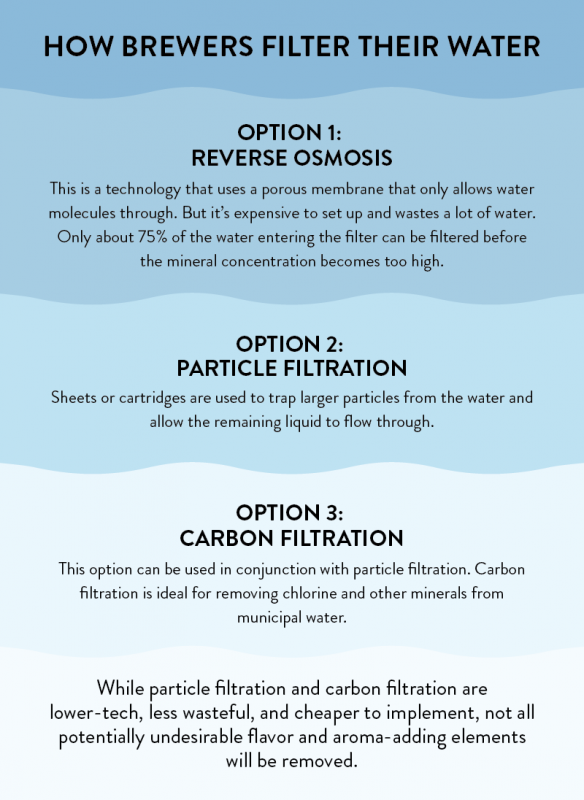How Craft Breweries Filter Their Water
Published on by Water Network Research, Official research team of The Water Network in Business
Water, and its filtration, is an integral part of brewing no matter which way you cut it, explains Richie Saunders, the head brewer of Shmaltz Brewing.

For Saunders, it’s about filtering out the regional vicissitudes of the water in different places or, sometimes, adding it back in. “When we as brewers look at the traditional European water profiles, we are generally looking at mineral content, so we can mimic water to match profiles for beers and characteristics we are trying to duplicate in our beers produced in the U.S. of A,” Saunders says.
Say you’re living in Dublin and want to make an IPA. You’re going to want to manipulate the water to make it ideal for the beer you’re brewing, rather than just relying on the water that Dublin has to offer. “Yeah, you are removing the ‘terroir’ element,” Saunders admits.
“But when we filter water, we don’t think of taking away character — more as maximizing the outcome, because we are able to take the water down to a base and allow ourselves to build the water up to almost any mineral mix we are focusing on based on the flavor elements we are trying to develop.”
When approaching a specific beer style, hardness and alkalinity can be a factor. So can trace minerals. For example, pilsners, a signature beer of the Czech Republic, have been made historically with soft water, or water without a high concentration of ions.
Alkaline water has higher concentrations of bicarbonates, which can have a surprising effect on grains during the boiling process. Acids are extracted from grains during the boil and the alkalinity of the water neutralizes them, which can depress flavors or tease out a wine-like characteristic in the final product.
Water that contains high concentrations of calcium chloride tends to produce hoppier beers, because hops cling to calcium.
Read more: Vinepair
Media
Taxonomy
- Public Health
- Treatment
- Drinking Water
- Alcoholic Beverages
- Beer
- Craft Beer Machinary